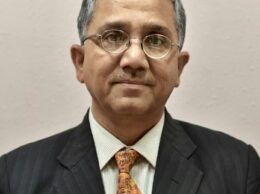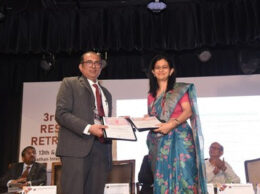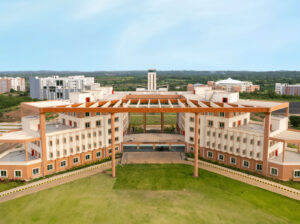Mandi, 18th March 2019: Indian Institute of Technology Mandi is introducing two new Elective Courses this semester on ‘Monitoring of Himalayan Environment Using Optical and Microwave Remote Sensing’ and ‘Geology and Geomorphology.’
The courses are being conducted by a Visiting Faculty to IIT Mandi from the United States – Prof. Ramesh P. Singh, Chapman University, School of Life and Environmental Sciences, Schmid College of Science and Technology, California.
Highlighting the unique aspects of these courses, Prof. Ramesh P. Singh said, “Himalayan Region is very dynamic, seismically active and weather conditions often change here. This Region has limited ground observatories, so satellite data is very important. Owing to a large number of active satellites orbiting the Earth today, this data will be of great help to monitor the environment of Himalayan Region and will also provide an early warning about any impending extreme event.”
The course on Monitoring of Himalayan Environment Using Optical and Microwave Remote Sensing aims to discuss basic principles of broad electromagnetic wave propagation and interaction with land, land cover, vegetation and snow/glaciers. The students will carry out data analysis associated to understand the cause of extreme events and atmospheric/meteorological changes to understand the dynamics of the environment in the Himalayan region. The course is intended for M.S., M.Tech and Ph.D. students of IIT Mandi.
The course will also focus on the coupling of land, land cover, atmosphere and meteorological parameters associated with extreme events such as cloud burst, snow avalanches and precipitation. The course will also introduce the optical and microwave properties of these parameters. The Himalayan Region is frequently covered with cloud cover which is not detected by the optical sensors. Microwave sensors have the capability to monitor the area during day and night and also through dense cloud cover. The use of Microwave sensors will, also, help in mapping of extreme events. Various applications such as mapping of forest fires, vegetation dynamics, characteristics of snow/glaciers and retrieval of meteorological and atmospheric parameters will be analysed using Remote Sensing data.
Geology and Geomorphology course is designed to familiarize students with basic concepts of geology, rock formation, rock types and geomorphological features and provide the required elementary knowledge of in-depth understanding about the formation of earth surface.
Two different broad themes of geology and geomorphology are being taught in this course. They include an understanding of formation of Earth, plate tectonics, rock types, progressing to the cycle highlighting the major minerals in different types of rocks, their occurrence, weakness, and properties, among other aspects. Further to this, one will learn about the formation of different features on the surface of the earth and the phenomenon governing them. The course is intended for the undergraduate students of IIT Mandi, especially for the students specializing in Civil Engineering.
Prof. Ramesh P. Singh emphasised the relevance of such courses for students of Civil Engineering discipline who are required to study the construction of structures, bridges, hydrological network, road and tunnel construction as a part of their curriculum. He stressed upon the importance of learning about the rocks/ minerals and surface/ subsurface and underground structures for the future engineers to construct and accurately design structure or for locating an appropriate site for construction in the Himalayan Region.
This course also covers extreme events such as earthquakes, landslides and cloud bursts which are frequent in the Himalayan Region. Prof. Ramesh P. Singh has taught the Engineering Geoscience course for 23 years at IIT Kanpur and also, in a U.S. University. He was the President of Natural Hazards Section of American Geophysical Union from 2016 to 2018.









